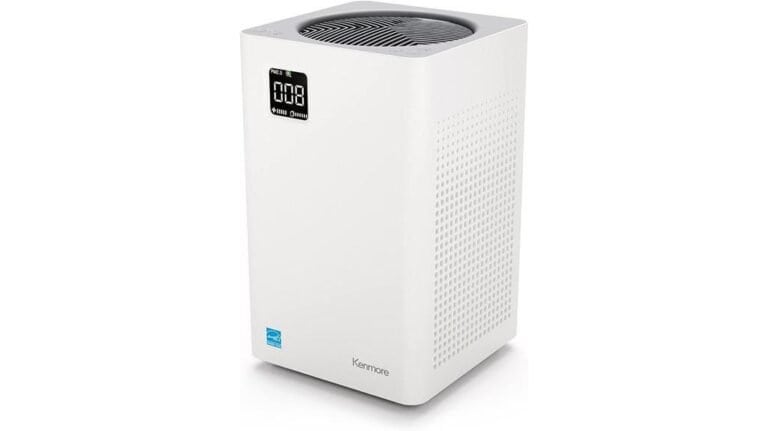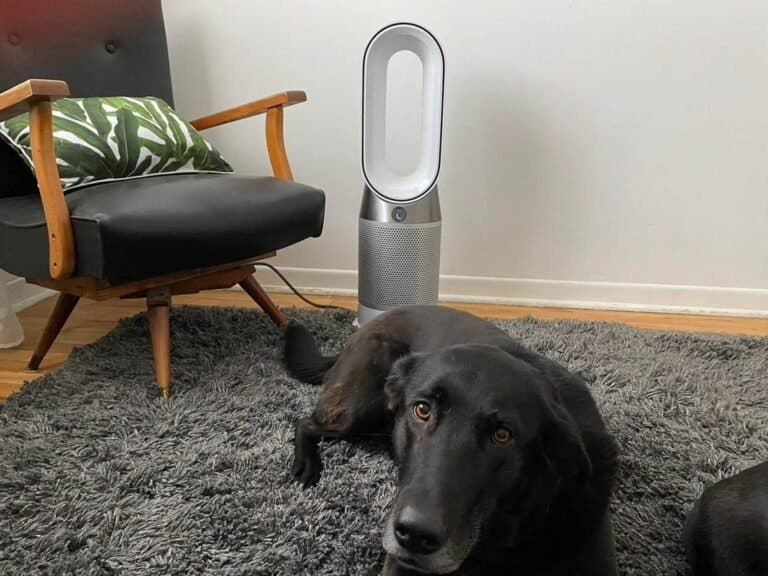Efficient Strategies to Minimize Dust Accumulation in Your Bedroom: Expert Tips for a Cleaner and Healthier Space
Dust accumulation in the bedroom is not only unsightly but can also pose serious health risks. From triggering allergies to causing respiratory problems, excessive dust can have a negative impact on your overall well-being.
However, with some efficient strategies and expert tips, you can minimize dust buildup in your bedroom and create a cleaner and healthier space to relax and sleep. In this article, we will explore various methods to combat dust particles, ensuring that your sanctuary remains free from allergens and promotes better indoor air quality.
Whether it’s through proper cleaning techniques or investing in suitable furnishings, our expert advice will help you achieve an environment that promotes restful nights and improved health for years to come.
Choosing the Right Flooring and Furniture Materials
When it comes to minimizing dust accumulation in your bedroom, choosing the right flooring and furniture materials can make a big difference. Here are some expert tips to create a cleaner and healthier space:
- Opt for hard surface flooring: Carpets are notorious for trapping dust particles, making it difficult to keep them clean. Instead, consider installing hardwood or laminate flooring in your bedroom. These smooth surfaces are much easier to keep free of dust.
- Avoid upholstered furniture: Upholstered furniture tends to attract and hold onto dust mites, pet dander, and other allergens that can cause respiratory issues. Opt for furniture made of leather or vinyl instead as they can be easily wiped clean.
- Use washable rugs: If you still prefer having an area rug in your bedroom, choose one that is machine washable so you can regularly remove accumulated dust with ease.

Implementing Regular Cleaning Routines
One of the most efficient strategies to minimize dust accumulation in your bedroom is by implementing regular cleaning routines. By following these expert tips, you can maintain a cleaner and healthier space.
- Start by dusting surfaces regularly with a microfiber cloth or electrostatic duster. This will help remove dust particles from furniture, shelves, and other surfaces.
- Vacuum your bedroom at least once a week using a vacuum cleaner with a HEPA filter. Make sure to also clean the area under your bed and behind furniture where dust tends to accumulate.
- Wash bedding and curtains regularly to prevent them from becoming reservoirs for dust mites and allergens. Use hot water when washing to kill any lingering bacteria or fungi.
- Consider investing in an air purifier with a HEPA filter, which can help trap airborne particles including dust, pet dander, pollen, and other allergens.
- Keep the bedroom well-maintained by decluttering frequently and avoiding excessive use of decorative items that collect dust easily.
By consistently incorporating these cleaning habits into your routine, you can significantly reduce the amount of dust accumulating in your bedroom while creating a healthier environment that promotes better sleep quality.
Utilizing Dust-Repellent Bedding and Window Treatments
Dust-Repellent Bedding
Investing in dust-repellent bedding can significantly reduce the amount of dust that collects on your bed. Opt for mattress and pillow covers made from allergen-proof materials, such as microfiber or tightly woven fabrics. These covers create a barrier against dust mites and prevent the accumulation of allergens like pollen, pet dander, and mold.
When selecting sheets and pillowcases, choose materials like bamboo or organic cotton that are hypoallergenic and more resistant to dust buildup. Regularly washing your bedding in hot water will also help eliminate any remaining dust particles.
Window Treatments for Dust Control
Using appropriate window treatments can play a crucial role in minimizing dust accumulation. Consider installing blinds or shades instead of curtains, as they tend to attract less dirt and debris. Vertical blinds are especially effective at repelling dust due to their easy-to-clean design.
If you prefer curtains, opt for lightweight fabrics that are easier to clean thoroughly. Be sure to vacuum them regularly using an upholstery attachment or shake them outside to remove any trapped dust.
To further minimize airborne pollutants entering your bedroom through windows, use window screens to keep out pollen and other outdoor allergens during high allergy seasons.
Properly Maintaining HVAC Systems and Air Filters
Regular maintenance of your HVAC systems and air filters is crucial for minimizing dust accumulation in your bedroom. By keeping these components clean and functioning efficiently, you can significantly reduce the amount of dust particles floating in the air.
- Regularly inspect and clean your HVAC system to ensure optimal performance. This includes cleaning the vents, ducts, coils, and fan blades to remove any accumulated dust or debris.
- Schedule professional check-ups at least once a year to identify any potential issues and address them promptly.
- Change your air filters regularly to prevent dust from recirculating back into the room. Depending on the quality of your filter, you may need to replace it every one to three months.
By taking these simple steps in properly maintaining your HVAC systems and air filters, you can create a cleaner environment with reduced dust accumulation in your bedroom. This not only helps improve indoor air quality but also promotes better respiratory health for a more restful sleep.
Minimizing Clutter and Simplifying Decor
Declutter your bedroom
- Keep surfaces clear by removing unnecessary items such as knick-knacks and decorations.
- Organize belongings in designated storage areas or bins to prevent dust buildup on surfaces.
- Minimize the number of furniture pieces in your room to reduce potential hiding spots for dust.
Simplify your decor
- Choose easy-to-clean materials like leather or vinyl for furniture upholstery, rather than fabric that can trap dust.
- Opt for washable curtains and blinds instead of heavy drapes that accumulate dust.
- Avoid excessive decorative pillows that are difficult to clean.
Managing Humidity Levels in the Bedroom
Maintaining proper humidity levels in your bedroom can help minimize dust accumulation and create a cleaner and healthier space. Here are some expert tips to manage humidity effectively:
- Use a dehumidifier: Investing in a good quality dehumidifier can help remove excess moisture from the air, preventing mold growth and reducing dust mite activity.
- Ventilate regularly: Proper ventilation is essential to control humidity levels. Open windows or use exhaust fans during showers or cooking to allow fresh air circulation.
- Keep indoor plants outside: Although indoor plants provide many benefits, they also release moisture through transpiration, increasing humidity indoors.
- Fix leaks promptly: Any water leaks or plumbing issues should be fixed immediately as they contribute to increased indoor moisture levels.
By implementing these strategies, you can maintain optimal humidity levels in your bedroom and enjoy a cleaner environment that promotes better health.
Implementing a No-Shoes Policy
- Limit the entry of dust into your bedroom by implementing a no-shoes policy. Shoes can track in dirt, pollen, and other allergens from outdoors that contribute to dust buildup inside your home. Encourage family members and guests to leave their shoes at the door or provide a designated area for them to store their footwear.
- By establishing this simple rule, you can significantly reduce the amount of dust that enters your bedroom. Not only does it keep floors cleaner for longer periods, but it also helps maintain better indoor air quality by reducing allergens present in your living space.
- Adapting to this new habit may take some time, but creating reminders at the entrance can help reinforce the importance of removing shoes upon entering the house. Providing shoe racks or storage options near entrances will make complying with this no-shoes policy more convenient for everyone involved while contributing to a cleaner and healthier environment within your bedroom space.
Utilizing Dust-Repellent Cleaning Tools and Products
Regular cleaning is essential for maintaining a dust-free bedroom. However, using the right tools and products can make your cleaning more effective in repelling dust. Here are some expert-recommended strategies to consider:
- Microfiber cloths: Opt for microfiber cloths when dusting surfaces as they have electrostatic properties that attract and hold onto dust particles, preventing them from becoming airborne.
- Dust mops: Consider investing in a quality dust mop with disposable pads or washable covers to effectively remove dust from hard floors without stirring it up into the air.
- Air purifiers: Running an air purifier in your bedroom can help filter out airborne particles, including dust, improving the overall air quality and reducing the amount of settling dust on surfaces.
- Allergen-resistant bedding: Choose hypoallergenic mattress covers, pillow protectors, and tightly woven sheets made of natural materials to limit the accumulation of allergens like dust mites.
Remember that consistency is key when employing these strategies; regular maintenance will ensure a cleaner and healthier space in your bedroom while minimizing the impact of accumulated dust on your well-being.






